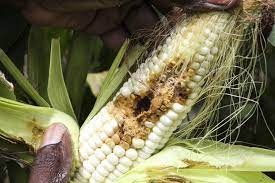Climate Stressors
Unfortunately, the changing climate increases stressors that weaken plant resilience, disrupting forest structure and ecosystem services. Rising temperatures lead to more frequent droughts, wildfires, and invasive pest outbreaks, leading to the loss of plant species. That has numerous detrimental effects including:
- Lowered Productivity: Longer droughts and increased number of heat waves will stress plants, causing them to be less productive. That causes a ripple of problems because plants are the primary producers of life on our planet, generating over 99.9% of the Earth’s living material. Plant productivity supports wildlife and serves as the basis of a multitude of food chains. The decline of plants means there will be less food, which can further lead to declines in animal populations.
- Spread of Invasive Plants: When environmental conditions change, native species can lose their natural advantages and invasive species have a greater opportunity to thrive and in extreme cases, take over landscapes. The invasive European weed, Purple Loosestrife, thrives in wetlands and chokes out native vegetation.
- Vulnerability to Pests: Native plants can lose resiliency due to climate-change induced stressors, making them more vulnerable to invasive insect pests. As the weather warms, more destructive pests will survive the milder winters, have more reproductive success, and their growing populations will cause more damage to the native tree and plant species. The infamous Emerald Ash Borer for example has destroyed the ash trees in the DC region and across the US.
- Saltwater Intrusion: As sea level rises, water from the surrounding areas will intrude into low-lying plant ecosystems. This means an increased risk of saltwater intrusion in fresh ground water or freshwater wells, which can be damaging to plants and disrupt wetland ecosystems.
- Altered Ecosystem Structure: As temperatures increase and soil moisture changes, plant and vegetative zones are shifting in response. Trees are forced to migrate to higher elevations to find cooler, more suitable climates for their survival. Plants experiencing a shift in their range will affect the ecosystem they are leaving and the system they are moving into.
- https://www.nps.gov/articles/000/plants-climateimpact.htm

